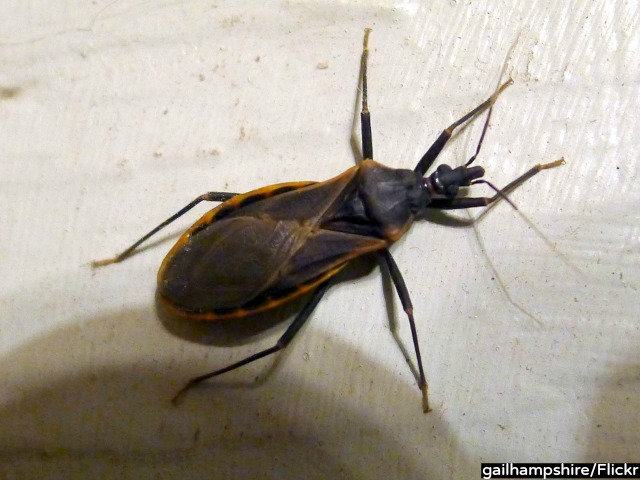A deadly disease called Chagas has been estimated to have infected at least 300,000 people in the United States, according to the Centers for Disease Control. This infection is transferred by the “kissing bug” and is contracted when the bug bites its sleeping victims, takes their blood, and then deposits its feces where the unaware victim rubs it into the open wound.
The disease can remain in the victim’s blood for over 20 years before it manifests symptoms. The first stage of the disease has few symptoms, and they can seem like symptoms of other illnesses, with fever, fatigue, achiness, headaches, loss of appetite, vomiting, and diarrhea. Those symptoms can last for weeks or months, but the second stage can trigger an enlarged heart, heart failure, altered heart rate or rhythm, cardiac arrest, or enlarged esophagus or colon.
Melissa Nolan Garcia, from the Baylor College of Medicine in Houston, said of the first stage, “People don’t normally feel sick, so they don’t seek medical care, but it ultimately ends up causing heart disease in about 30 percent of those who are infected.” Garcia added that there may be more than 2,000 congenital cases through mother-to-child transmission.
Garcia’s team studied 17 blood donors in Texas who had the parasite that causes Chagas disease. She said, “The concerning thing is that majority of the patients [I spoke to] are going to physicians, and the physicians are telling them, ‘No you don’t have the disease’… A lot of the cardiologists were aware of Chagas disease, but they don’t make the connection when the patient is sitting in front of them.”
The actual parasite causing the disease, Trypanosoma cruzi, is found in Mexico, Central America, and South America. Roughly eight million people have the disease; most are unaware they have it.
The CDC says that the bulk of victims in the U.S. have visited Latin America, and that’s where they picked up the bug. But Garcia said the parasite has arrived in the U.S. She said, “We are finding new evidence that locally acquired human transmission is occurring in Texas. We were surprised to find that 36 percent had evidence of being a locally acquired case. Additionally, 41 percent of this presumably healthy blood donor population had heart abnormalities consistent with Chagas cardiac disease.”
The Washington, D.C. area has been hit; with about two dozen cases reported.
Dr. Rachel Marcus, a cardiologist, says the vast number of immigrants from Bolivia residing in the Northern Virginia area means the numbers could be higher, as the disease is endemic in Bolivia. She asserted that if doctors would use an electrocardiogram (EKG), they could find the victims more easily, concluding, “If you were to find that EKG from an area where Chagas is common, it’s diagnostic.”
The Food and Drug Administration has not yet approved nifurtimox and benznidazole, which are the current treatments for Chagas. Those drugs, according to ASTMH (American Society of Tropical Medicine and Hygiene), run the risk of nerve damage, nausea, and weight loss.

COMMENTS
Please let us know if you're having issues with commenting.